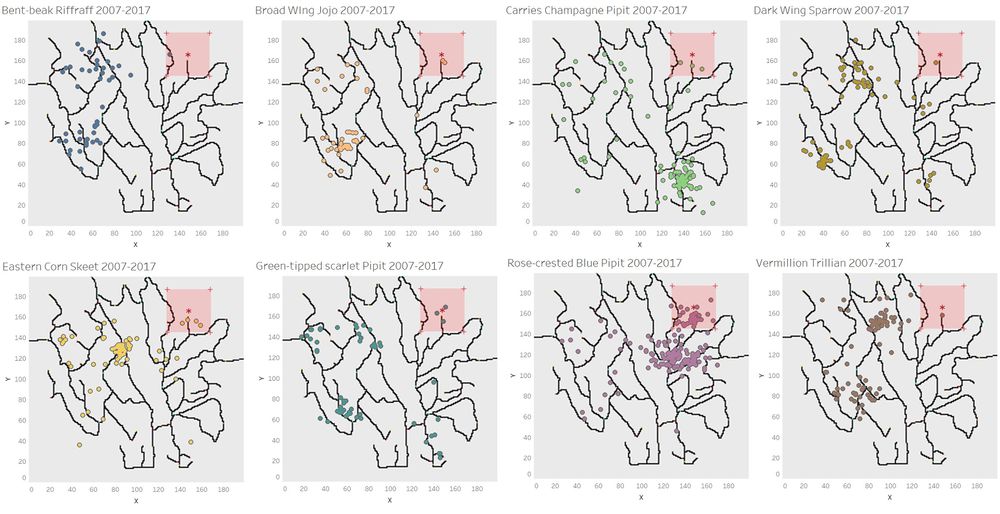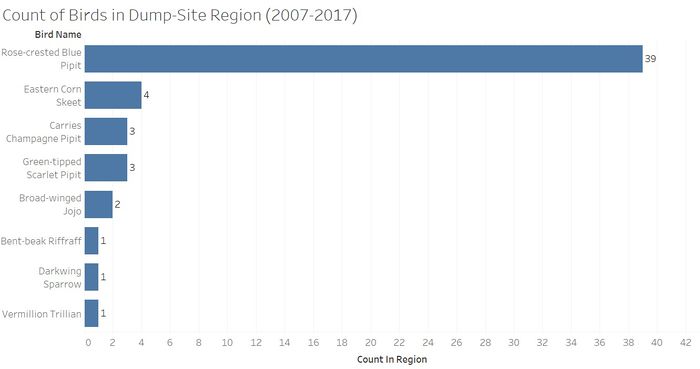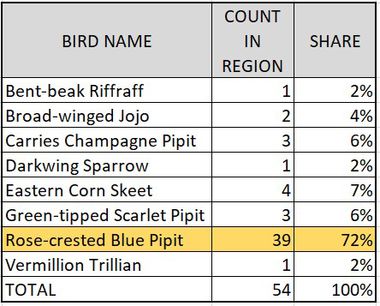Difference between revisions of "ISSS608 2017-18 T3 Assign NEVIL BRUNO Q1"
| Line 48: | Line 48: | ||
[[File:Nevil 8bird.jpg|1000px|center|]]<br> | [[File:Nevil 8bird.jpg|1000px|center|]]<br> | ||
To summarize the spotting within the region for the given time-period:<br> | To summarize the spotting within the region for the given time-period:<br> | ||
| − | + | [[File:Nevil 8chart.jpg|700px|center|]]<br> | |
| + | [[File:Nevil 8table.jpg|380px|center|]]<br> | ||
It is quite clear that the Rose-crested Blue pipit thrives in this location. It accounts for 72% of all the bird sightings in the region.<br> | It is quite clear that the Rose-crested Blue pipit thrives in this location. It accounts for 72% of all the bird sightings in the region.<br> | ||
Revision as of 21:24, 7 July 2018
|
|
|
|
|
|
|
|
Question 1
Using the set of bird recordings across different locations in the preserve across the years, we will be analysing the scatter and distributions to identify any abnormal activity/ patterns. We will be analysing the pattern and distribution of all the birds across the preserve for the 2007 to 2017 time-period.
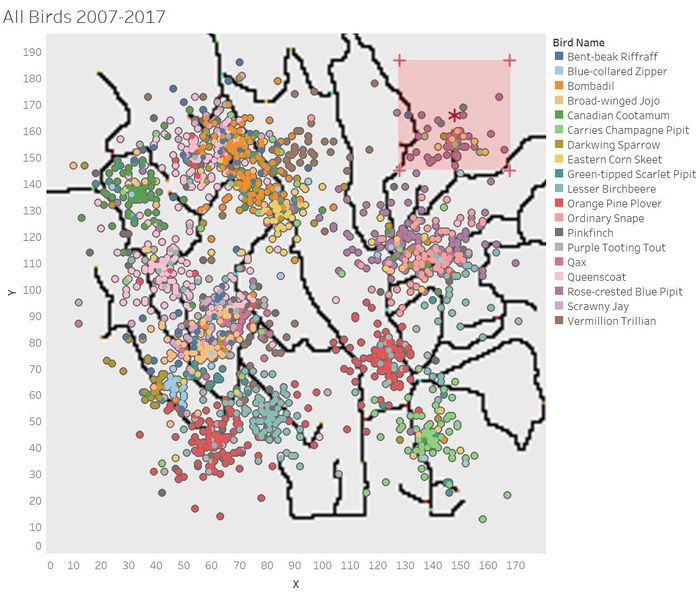
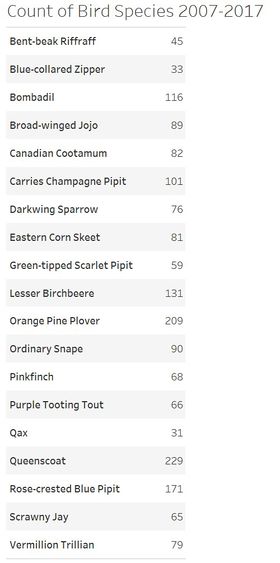
Focus on the Dumping Region
Since the analysis requires us to determine if the dumping has caused any sort of decline in bird species, we focus on the area around the dumping site and focus on the bird species found in the dumping region. For the time frame 2007-2017, there are 8 bird species that are present in the dump region. The plots for the 8 different bird species can be seen below.
To summarize the spotting within the region for the given time-period:
It is quite clear that the Rose-crested Blue pipit thrives in this location. It accounts for 72% of all the bird sightings in the region.
Since the other 7 bird species are negligible, we can proceed to focus only on the Rose-crested Blue Pipit pattern.
Focus on Rose-crested Blue Pipits
The Rose-crested Blue Pipit scatter plot across the preserve for each year can be seen below:
To put things into perspective, here are the numbers to help us understand these patterns:
Summary
Looking at the charts and number, it can be clearly seen there is a decline in number of pipits in the region. It should also be noted that for the last 3 years (2015, 2016, and 2017), there have been no signs of any pipits despite having Rose-crested Blue Pipits in other parts of the Preserve.
It is evident that the marked region is a favourite spot for the Rose-crested Blue Pipits. But post 2014, there has been a shift or decline in the pipit population, especially in the marked area. It is most likely the dumping took place sometime between 2014 and 2015, which resulted in the decline of pipit population in the region. Unfortunately, due to the lack of monthly level data, it is not possible to determine the exact month the decline started to take place:
Last known sightings of the Rose-crested Blue Pipit’s in that area was on July 2014.

